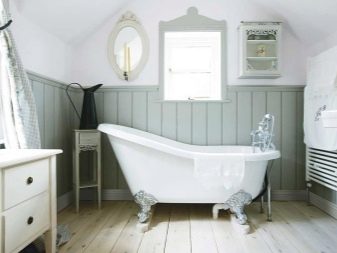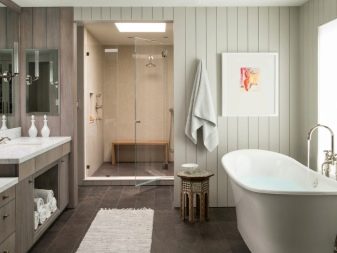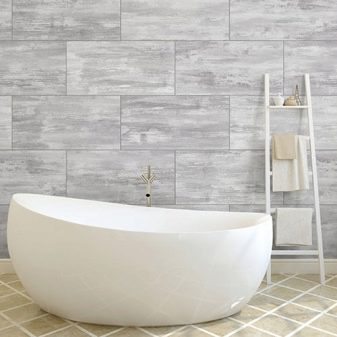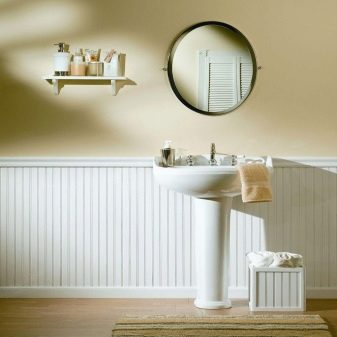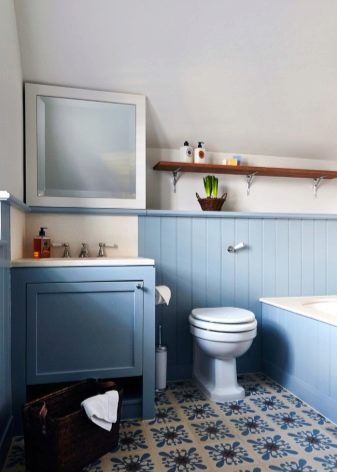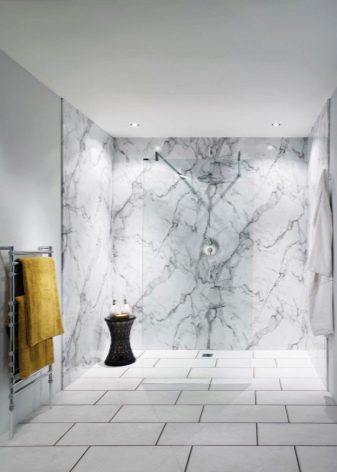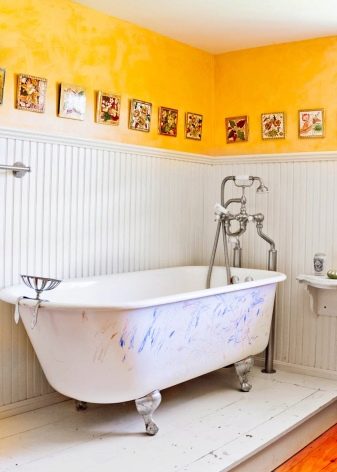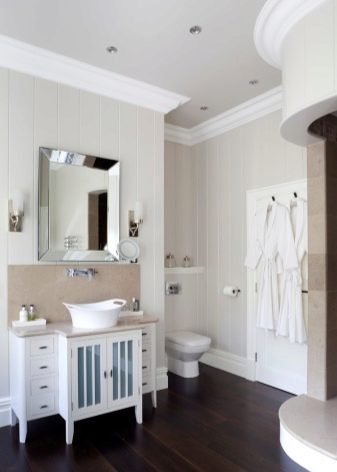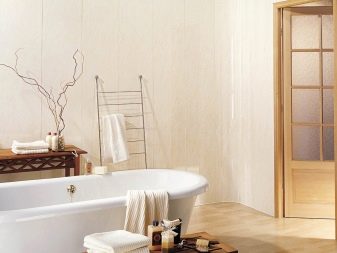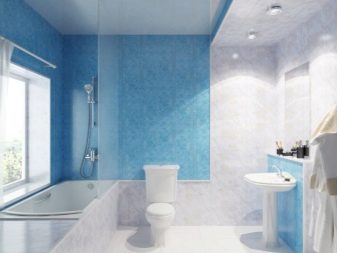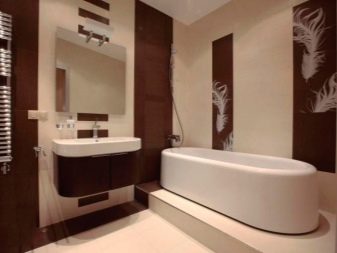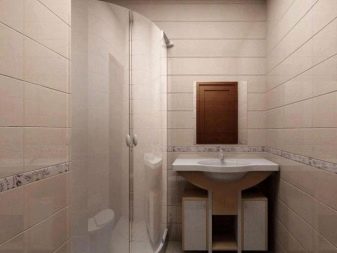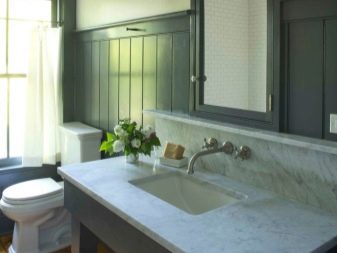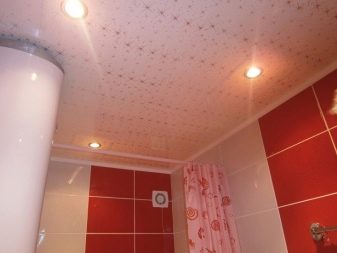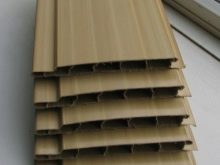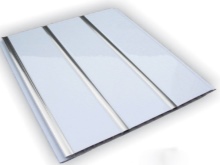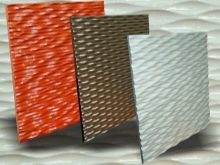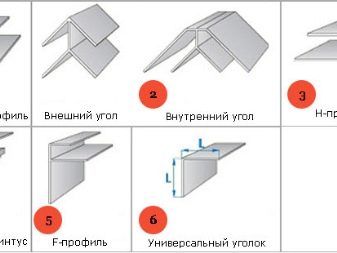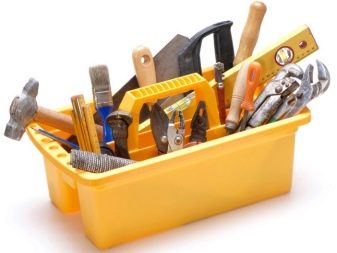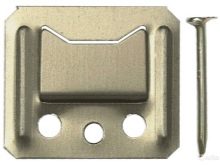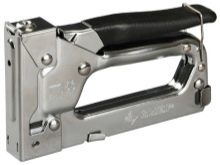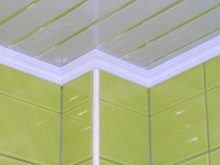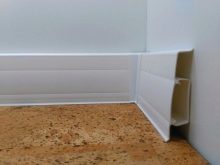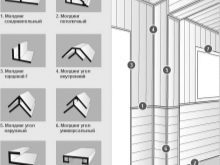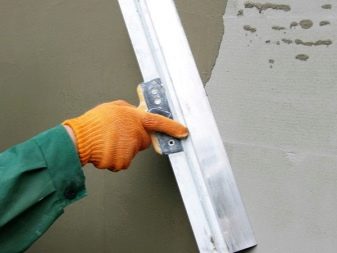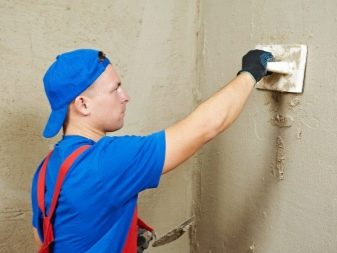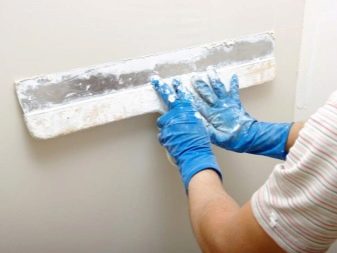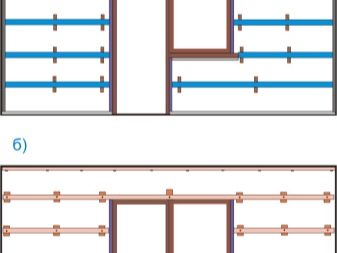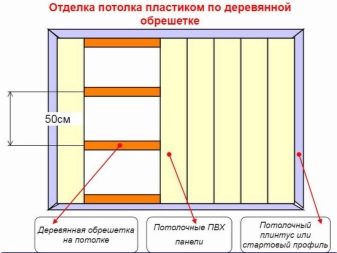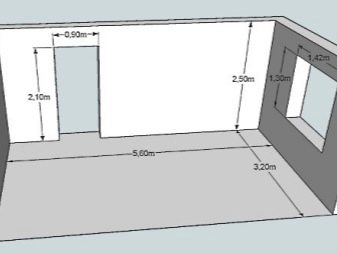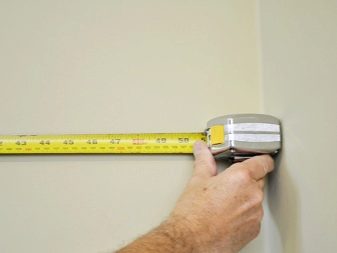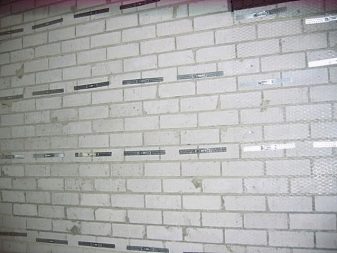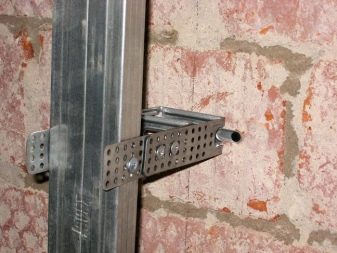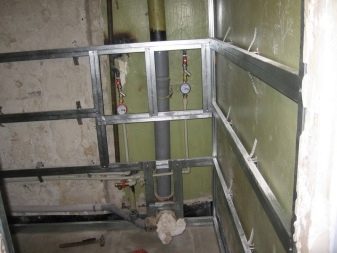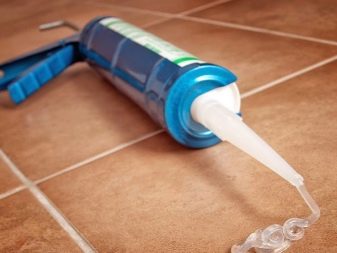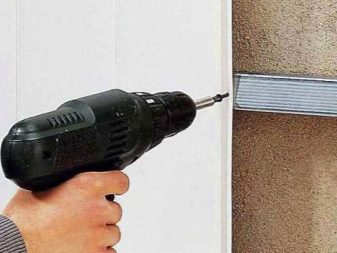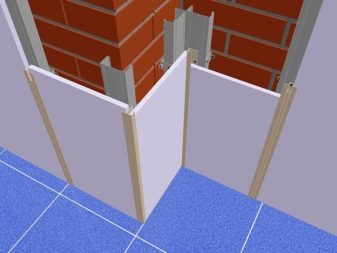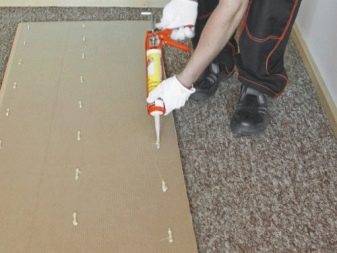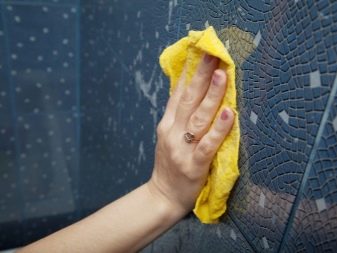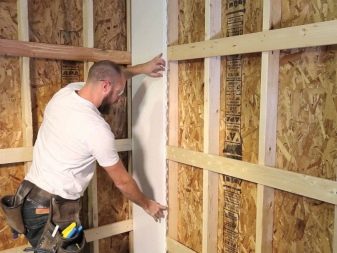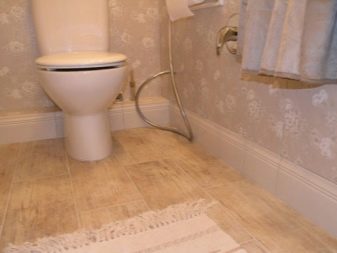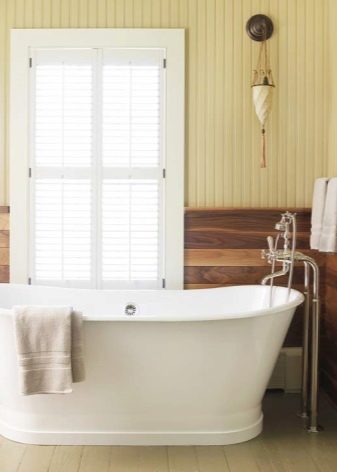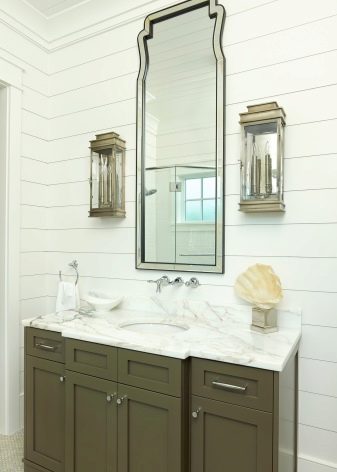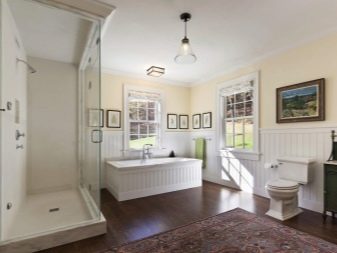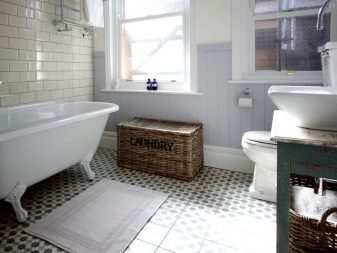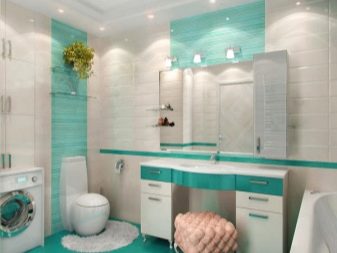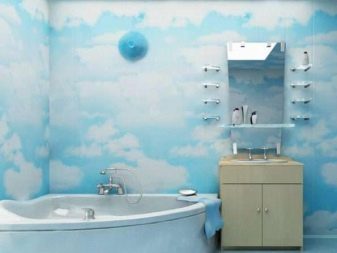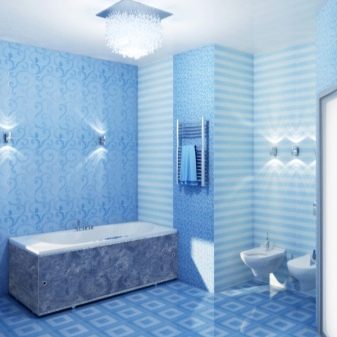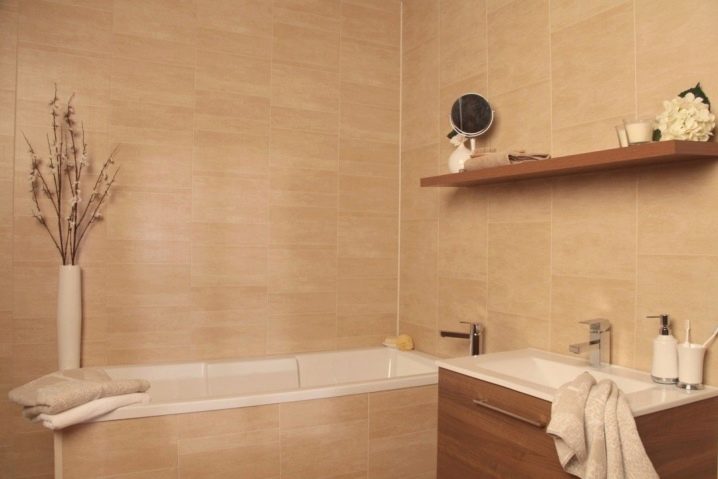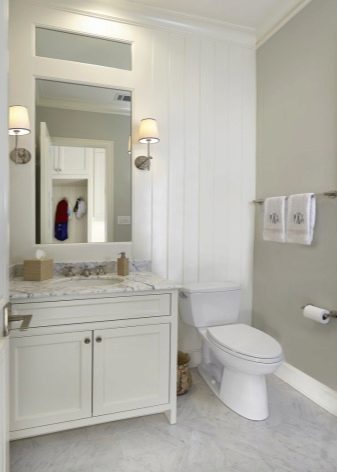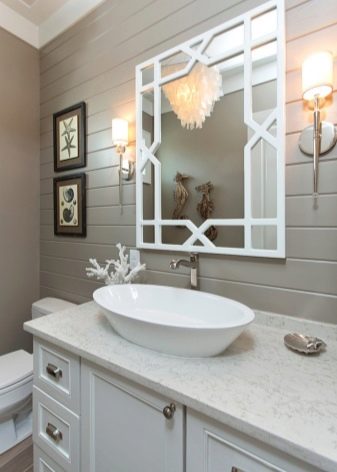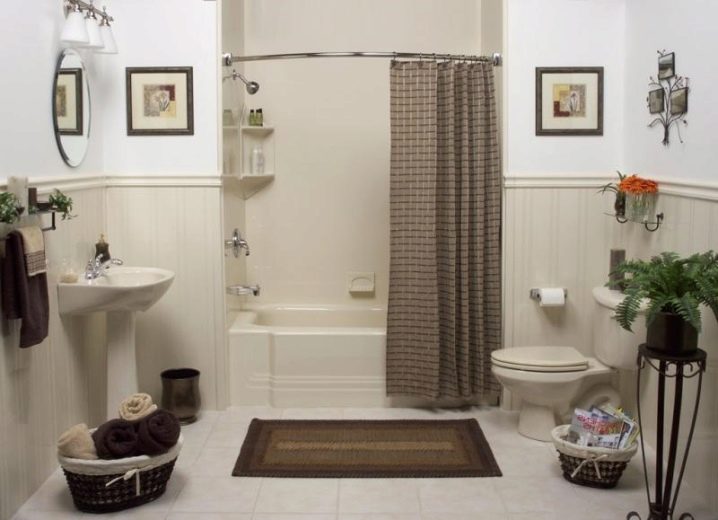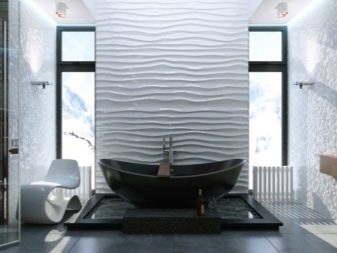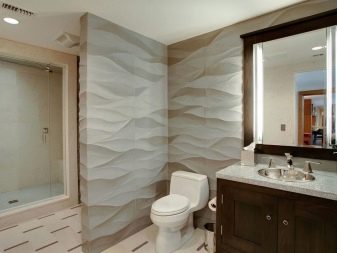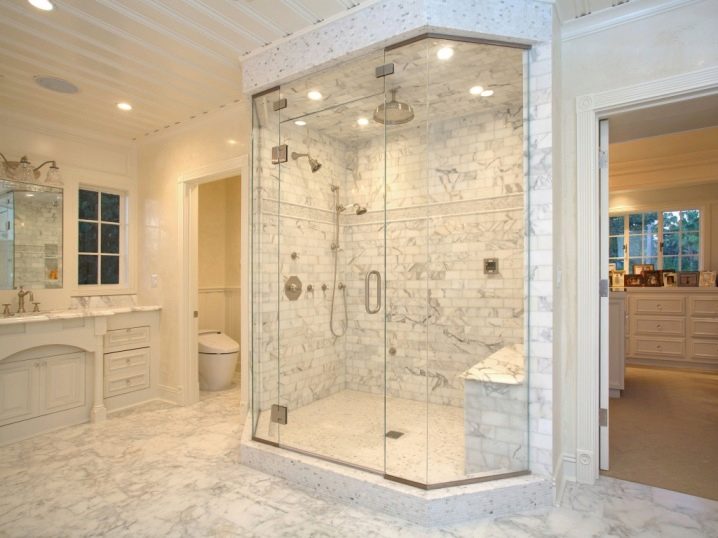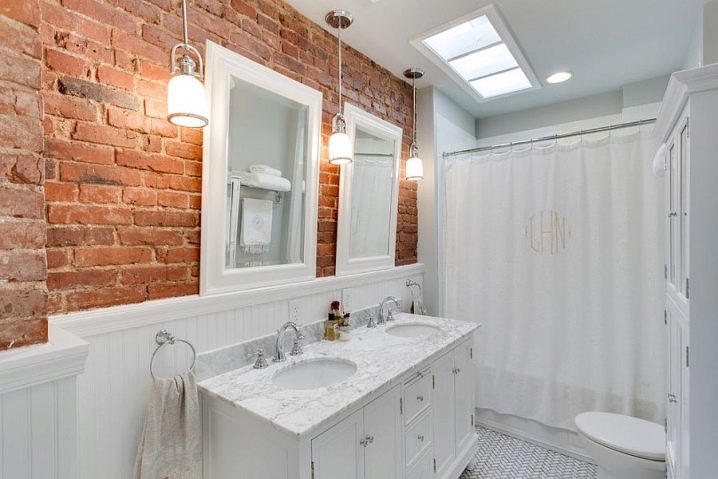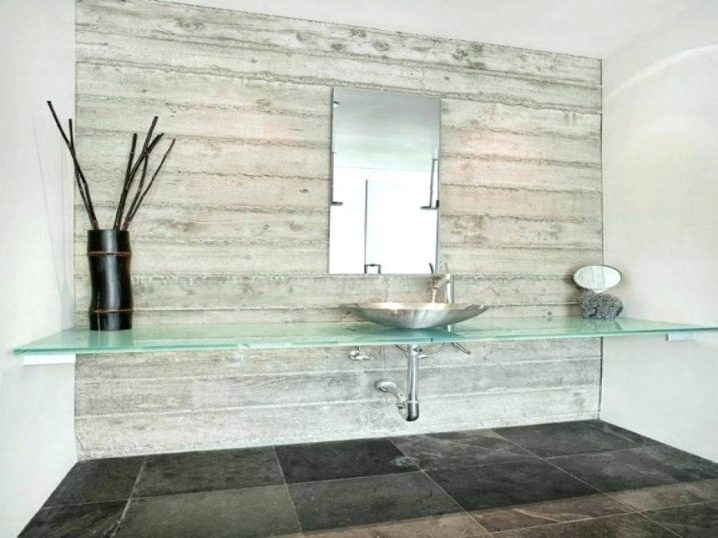PVC bathroom wall decoration
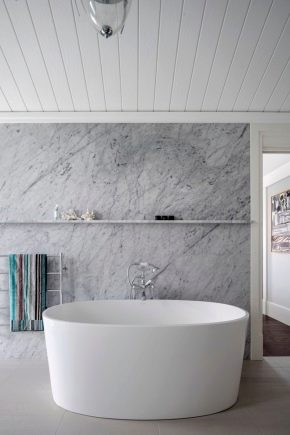
If the choice of finishing materials for the bathroom preference is given to PVC panels, then there are questions about their installation. This process is understandable to everyone, because you can install the panel without the involvement of a specialist from the outside.
However, it is necessary to know certain nuances.
Special features
PVC panels - a decorative material made of plastic, rectangular or square in shape, is a peculiar alternative to ceramic tile. In contrast, they do not need to dock themselves, seeking an identical gap between the elements.
Most of the panels have a special connection technology. Conventionally, it is called suture and seamless.Externally, the seams are visible in each type of finish. The difference is that with seamless panels they are neater and thinner. Other species do not have a similar attachment.
Their use is associated with the preliminary preparation of the base - it has to be cleaned of the old lining: paints, tiles, plaster. The installation technology can be frame or frameless - it depends on the flatness of the walls, communications, square footage of a particular room. The installation method largely depends on the height difference of the walls: if their height and geometry are far from ideal, then you have to mask the flaws at the expense of the frame.
In one case, the panel has to glue to the base. The frame technology involves the manufacture of crates (construction of profiles). A void is formed between the base and the panels. No glue is needed here: the system is created from metal profiles and special fasteners. Depending on the type of panel, the panel can be mounted vertically and horizontally.
This material is included in the line of materials required for lining. It has an elastic, but not soft structure, does not change it, but is not designed for significant mechanical damage. If it is hit, then dents may remain on the surface.The scratches will not be able to disguise or paint over - the material does not provide for this.
It does not accumulate static electricity, it has antibacterial properties. In addition, the panels are easy to clean - to clean the surface, it is enough to wipe it with a clean, damp cloth. Quality material is not afraid of household chemicals.
Advantages and disadvantages
Plastic panels have many advantages:
- They are aesthetically appealing. With their help, you can design the interior of the bathroom in any stylistic decision.
- The raw materials used are high-tech. It is created on modern equipment with the requirements of safety standards.
- The range of cladding and color palette are varied.
The buyer has the ability to select panels of any color.
- The panels differ in texture. Her ability to imitate allows you to change the aesthetic perception of the bathroom. The texture easily conveys the material of wood, marble, stone, brick.
- The material is resistant to temperature extremes. It does not change its structure under the action of moisture and steam, it is resistant to light.
- Panels can be fixed to different floors. They look beautiful on walls and ceilings.
- PVC trim can become an independent background of the bathroom or its stylish accent. She can zone the space of the room.
- Panels well hide communication systems. They can decorate the bath screen and the space under the sink.
- Assembling the frame for the installation of such a system is easy. That he is the guarantor of durability.
- These panels look great with a different finish in the bathroom: they can be combined with ceramic or mosaic tiles.
It is worth noting a few drawbacks of such a finish.
- When preparing the base, it must be treated with an antistatic compound. Sometimes, when operating in the cavity between the material and the surface, molds form.
- The cost of the panels can not be called a budget, the savings are due to an acceptable price of work.
- The adhesive method can not be called good if the walls differ in curvature and bulge in height.
- The frame system "steals" centimeters of usable floor space of the bathroom. It is not scary for a spacious bathroom or toilet, but not always successfully for a small room.
Types of panels
Conventionally, all existing types of plastic panels can be divided into 2 types:
- wall;
- ceiling.
The difference between the two is the thickness — the ceiling variations are thinner. This is associated with a decrease in weight load, which is especially important for loose floors of a panel house or a private structure made of wood and foam blocks. Differs material width and length, some varieties more resemble sheet material.
Parameters can be small - 100x50 cm. Other decorative panels are similar to slats - they are mostly thin, however for durability, an important criterion is durability: the larger it is, the more durable the cladding.
By type of texture, varieties are distinguished by their reflectivity: Lamellae can be matte or glossy. Using gloss on the ceiling allows you to visually stretch the length of the walls of the bathroom, to make the space more. Matte options are especially harmonious where imitation of other material is needed.
Plastic is well combined with mirror inserts - such panels are used for ceiling decoration.
Interesting texture with relief. With its help, you can add to the interior of the bathroom a special flavor.Typically, these varieties are made for finishing wall ceilings. Sometimes they are more like sheet materials. They can be thin or moderately dense, but the strength allows you to trim the walls near the places of greater use.
Training
It is not difficult to mount the panels in the bathroom, however, you will need to prepare the base, stock up with facing materials, frame component parts in the case of this technology, as well as inventory.
For the frame method can be useful:
- guide rails (batten profiles);
- plastic finishing profiles;
- plastic corners;
- screwdriver;
- hacksaw;
- self-tapping screws;
- dowels;
- ruler, pencil;
- building level;
- clamps;
- crosshead screwdriver;
- construction stapler;
- perforator.
Depending on the type of panels you have to buy a ceiling or floor plinth. Sometimes auxiliary material may be foam, sealant and insulating material. When glue method buy glue liquid nails. Molding can be connecting, ceiling, end, internal, universal, external and starting.The choice of the desired type is made based on the perspective of the walls or ceiling, it depends on the presence of projections, niches, wall skewness.
Preparation of the basis usually does not take a lot of time. It is necessary to strengthen the base, which is especially important when porous, loose floors. They are usually showered, as they are made in violation of the construction technology. It is impossible to make a quality crate or a classic glue base on them.
Start with leveling the surface. If it has bumps, they are removed. At this stage, the surface is primed with a primer with a high penetrating power - it makes the structure of the floor uniform, binds dust and cracks. The soil is applied in a uniform layer. When dried, it forms a crystal lattice that improves adhesion.
Visible defects - cracks, chips, hollows - are trimmed with cement-based plaster and puttyed. Mixtures based on gypsum type rotbands can not be used in the bathroom, as they are damp and peel off from the base. If it is necessary to make the corners straight, this process is carried out by means of a perforator. Then comes the turn of the primer.
A repeat layer will link all the previous ones.
Calculations
When the base is prepared, proceed to the construction of crates. However, its production depends on the calculations made. They include accounting for the number of fasteners, profiles and guides. The calculation allows you to determine the amount of material required.
To find out how much a profile is needed, several factors have to be taken into account:
- the position of the components of the batten is strictly perpendicular to the panels;
- the optimum gap between the panels should be 3-5 cm;
- to open the door using additional slats;
- the installation is carried out on the perimeter or in part;
- besides crates, we need guides;
- Calculation data is rounded up.
The number of fasteners depends on the length of the panel to be installed: usually 1 lock is used for every 50 cm. When working with the cleats, 20 pieces will be left. on 1 square. The number of facing panels depends on the volume of the trimmed plane.
In the event that it is necessary to sheathe the entire wall with panels, they proceed from its height. Then the total length is divided by the width of 1 lamella. The calculation of the panels near the doorway is performed separately.Galtels (plinth) are considered around the perimeter, measuring the distance with a tape measure. If sheet material is used in the work, then the calculation of the PVC plates is determined by the area formula.
Installation
Sheat PVC-panels of the floor surface of the bathroom with their own hands, you can follow simple instructions. It should be noted step by step the main nuances of mounting the frame method on a metal crate. It is undesirable to use wooden versions - it will not give perfect joints.
Determine the area planned for surface treatment. Remove from it the area of the door and window opening, if any.
You can use the formula Stob = L * H - (S1 + S2), where:
- L is the length;
- H is the width;
- S1 - the area of the window opening;
- S2 is the door opening area.
At the same time make a small margin on trimming. For mounting, you can use staples and a construction stapler. Fixing the panels to the wall with their help is easy. The adhesive method is a quick method of installation, but if you need to replace the lamella, it will be difficult to do so.
Before creating the crates, once again check the flatness of the surface by means of the rule.
- On the frame. For the frame method, the horizontal guides are initially set along the perimeter. To do this correctly, start with markup for fixing metal profiles. When it is ready, drill holes in the marked places.
Then fix the guides using screws.
Install horizontal slats need depending on the desired strength. For example, when facing the ceiling, it is recommended to mount at a distance of 30-40 cm. If it is a wall frame, then the distance can be 40-50 cm. The end sections of the profiles should ideally enter the corners of the room. Once the frame grid is ready, you can proceed to the fastening of the panels.
Begin facing the bathroom or toilet from the very corner of the door - this technique allows you to get rid of defects during the lining. At the ready hold sealant for sealing seams.
To make the corners look beautiful and professional, they use a peculiar corner (external or internal profile in the shape of the letter L). Plinth is used when docked with the floor. When the corner profile is installed, PVC lamella is inserted into it. Then it is fixed to the frame rail.
Further work is to insert each subsequent panel into the gap of the previous one. This should be done carefully, pressing it tightly with little effort so as not to damage the plastic. If during the lining you need to make a hole for the socket, then it is performed before it is attached to the wall. To give the finish a complete look and to hide the flaws, you can glue the ceiling and floor plinth from above and below.
- On glue. This method is simpler and more accessible to every man in the street, because they do not need to use metal fasteners and profiles. The principle of operation does not differ from frame mounting: installation starts from the corner. The panels are trimmed to the desired size, then take one such panel and apply liquid nails on the back side. It is necessary to use glue under the construction gun. The composition is applied dotted - in a checkerboard pattern.
One cartridge is usually not enough - the average consumption is 1 pc. on 5 square meters. m. Glue should be applied away from the edge. It will not be possible to remove its surplus from the front surface - this will spoil the panel and the type of decoration. After applying the composition seizes quickly. You need to take the panel and attach it to the place, pushing his palm.
However, angles are rarely perfect. To glue the first lamella correctly, you have to use the construction level. Often the master in order to prevent sliding of the panel is fixed at the bottom and top by means of screws. If you fix it in this way, it will not budge. Seen fasteners will not be - they are closed with baseboards.
Starting strips and corner connectors are used if necessary.
Sometimes (for example, in a toilet) there is enough floor plinth.
Useful tips
Simplify the selection and installation of PVC panels will help the advice of professional craftsmen.
- When buying a material you need to squeeze the panel with your fingers at the end. If it is soft, then there will be a dent. Take such material is impossible.
- If the lining has a picture, then it is necessary to check its coincidence with each panel. The lines of the pattern should go from one panel to another.
- The strength of the print is important. On poor-quality material, the figure is erased by friction - such raw materials are not suitable for finishing.
- High-quality cladding has no gaps when docked. It is necessary to connect the panels and inspect them for cracks. Their presence indicates marriage and low-grade goods.
- The thickness of all elements must be identical, because, otherwise, the plane difference will be noticeable against the background of the built-in backlight.
- Matters plasticity of PVC panels. Low-grade product cracks with the slightest bending - this is an obvious marriage, a product of recycling PVC with low cost and poor qualities.
- In order not to be mistaken in the calculations of fasteners, experts recommend buying clamps and screws in bundles, based on the width of the panels used.
- The installation of vertical panels increases the height of the ceiling and contributes to a better removal of moisture. When horizontal laying water will linger on the lamellae.
Cutting panels up and down can be done with a sharp-edged mounting knife. Sometimes for this purpose use the Bulgarian or a hacksaw on metal. However, the latter method is not in demand due to the complexity of the work. The file is used with a minimum tooth.
- Strips are able to crush the room. To prevent this effect, in a small bathroom it is preferable to install panels of light shades.
- For effective design, you can combine panels of different textures and size - this will make the interiornot boring.
- It is better to select color of furnish on the general concept of stylistics. The tone should not coincide with the background of the floor or furniture. The priority is soft and muted paint.
- The markup is carried out based on the location of the communication systems. It is not always possible to disguise them. If possible, use the panel snag.
- The plinth when facing walls allows to strengthen the lower fastening of panels.
- It looks better panels with a smaller thickness of the seam.
In the bathroom, additional crushing is undesirable - besides not aesthetics, it is associated with the complexity of cleaning.
Beautiful examples
You can assess the possibilities of facing the surfaces of the walls and the ceiling of the bathroom, drawing attention to the examples of photo galleries. This will allow you to see the different ways of decorating, as well as the combination techniques.
- In this example, wall panels with an accent in the bath zone are used in combination with floor tiles. Successful embedding fixtures.
- Wood panels are used here as a background design. Made frame construction for finishing the bath screen.
- The original technique of suture technology. Here are applied narrow slats for one of the walls of the bathroom.
- Accentuation of the shower area and decorative panels protecting the walls in especially dangerous wet places. The plinth makes the decoration complete.
- The panels with a three-dimensional effect create a special atmosphere in the interior of the bathroom. Accentuation of the wall and partitions contributes to a clear organization of space.
- Stylish choice for bathroom ceiling. Lamellae look impressively against the background of brick wall decoration and marbled floor material.
- A brutal solution in the style of a loft. Combining panels with brick trim. The white color of the slats softens the rough texture of the brick.
- Accentuation of the wall arrangement of sinks and mirrors. Bleached wood textures are used.
An overview of the wall panels awaits you in the next video.
